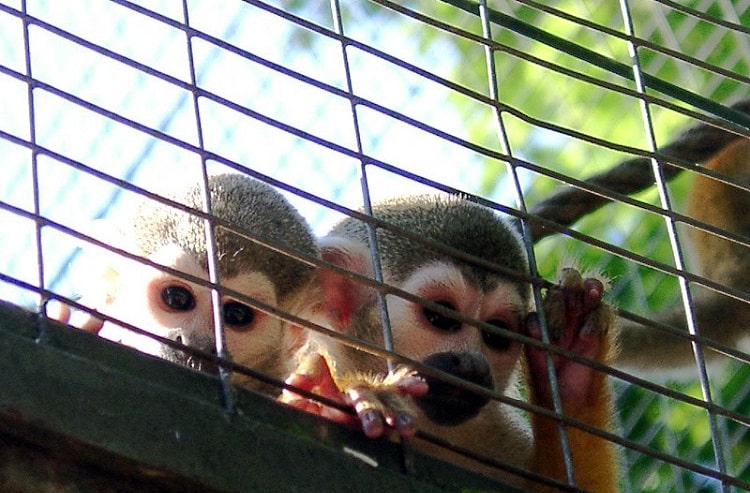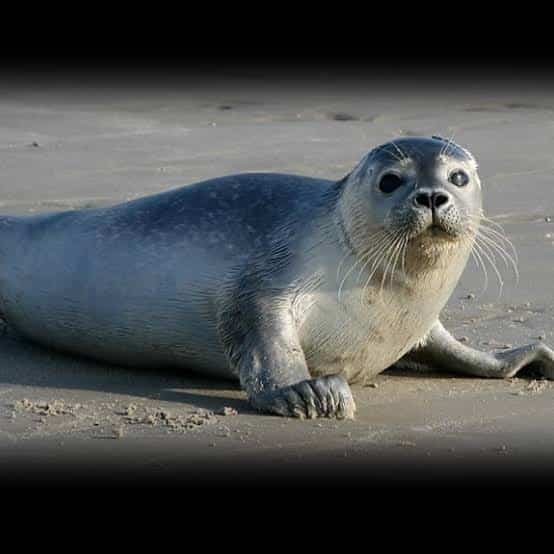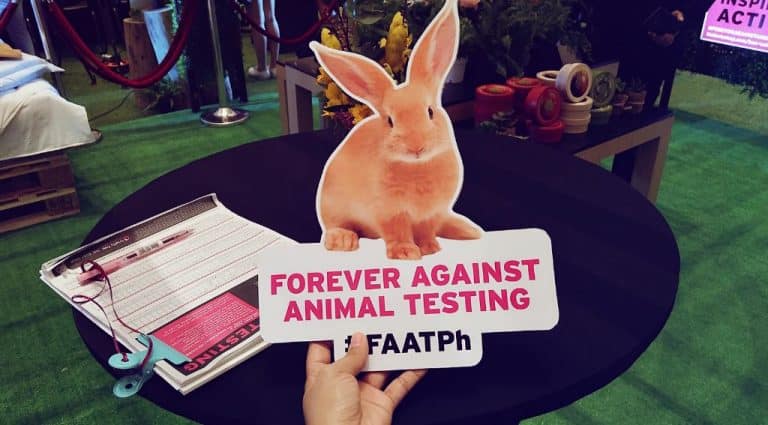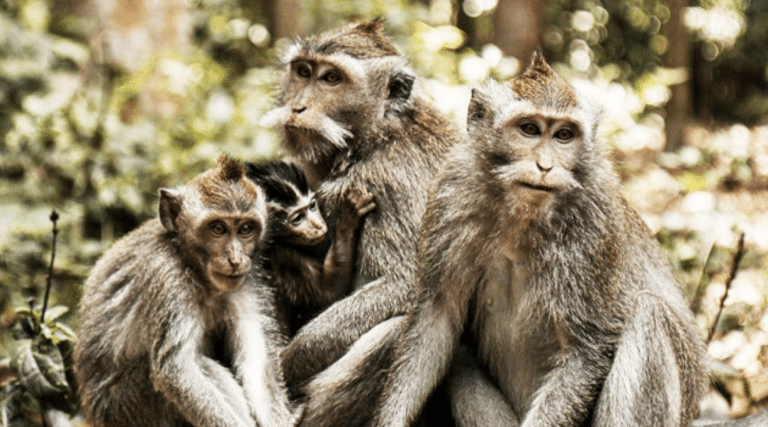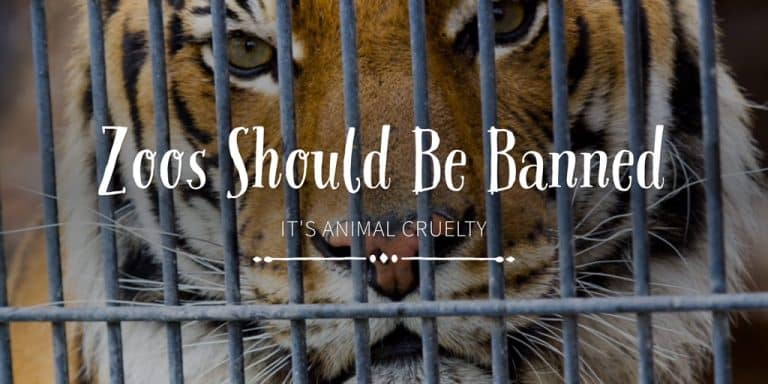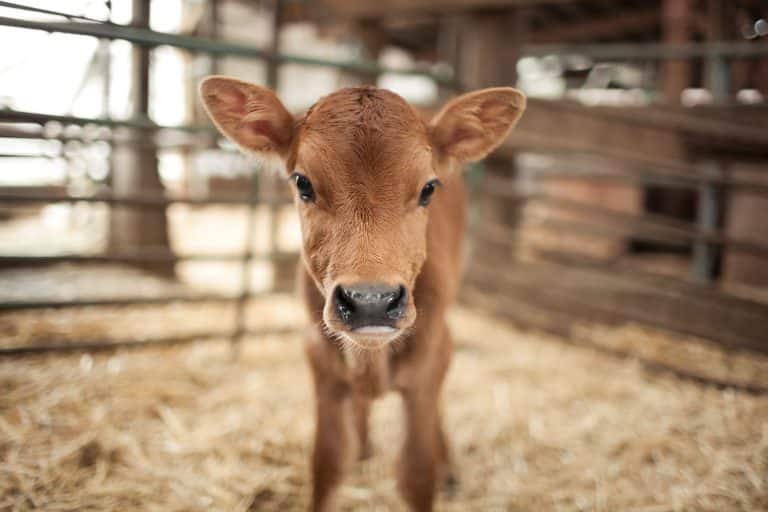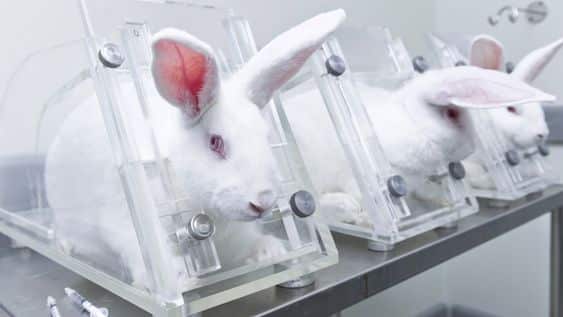How Many Animals Die in Zoos Each Year Worldwide
Animals are a true blessing that nature has given to mankind. While many appreciate the blessing, others have taken it for granted. Cruel practices against animals are not hidden, as they are exploited for meat, leather, and whatnot.
Another form of cruelty that is often overlooked is Animal Captivating. Stripping these babies of their natural environment and forcing them to stay in inhumane and torturous conditions has become a norm.
Regardless of wild or domestic nature, animals should not be captivated against their will. It’s as cruel (if not more) as putting humans in prison without any fault.
You might have given animal captivity a floating thought, but it’s time to learn how it has been taking a notorious turn over the years.
Animal Captivity: Overview of a Cruel Practice
Animals belong in the wild, and those regarded as domestic deserve freedom. Animal captivity is a rather cruel practice where all kinds of animals are moved from their natural environment and kept in captivity for various purposes like entertainment, slaughtering, and dairy production.
Keeping them in captivity has impacts that are beyond imagination. It impacts their life negatively from all sides. Studies show that animals captivated for a long period are prone to several diseases and often die early. Every year, millions of animals are brought in captivating for petty reasons, whether for commercial gains or human amusement.
There are popular practices where animals are captivated, like:
- Animal Trading
- Zoos
- Slaughter House
- Dairy Farms
- Unhealthy breeding
Statistics: Animals Dying in Captivity
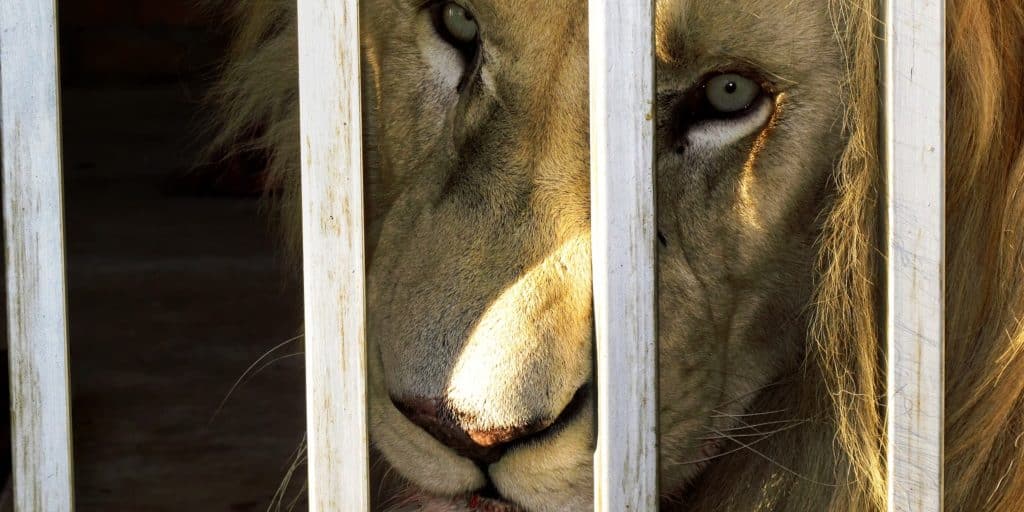
If you have ever looked at the data referring to the deaths of completely healthy animals once they are brought into captivity, your heart will wrench. While the data is different for different countries, take a look at the stats of countries where the impacts of captivity have reached an alarming level-
- Around 3,000 to 5,000 animals are killed in European Zoos every year.
- More than 5,000 Tigers are captivated in China and are used for traditional medicine creation.
- In America, there are more number of Tigers in captivity that are roaming free in the wild. A recent survey suggests there are 7,000 tigers in captivity and only around 3,800 in the wild.
- Calves are removed from their mothers at an early age to be kept in Aquariums for giving performances.
- According to a survey done by PETA, 75% of reptiles, including snakes and tortoises, die within a year of becoming a pet.
- 43% of WAZA partners offer petting animals as entertainment, which is the cruelest form of captivity.
Take a Look: Shocking Stats of These 21 Animals in Captivity
You must have visited a zoo in your city or as a part of your vacation itinerary. We all have because of the misconception that zoos are for healthy entertainment and educational purposes. Animals in zoos are brought from their natural habitat to stay in confined areas, which impacts their overall health and strips them of the fundamental right to life and freedom.
Take a look at these 21 animals in sad captivity stats, to say the least:
1. Polar Bears in Zoos
The condition of Polar Bears due to global warming was sad enough for their survival. They are also put in zoos for entertainment purposes, and while authorities argue that they offer a “natural” condition for Polar Bears, the reality is far from this.
According to a study done by the Freedom for Animals group, Polar bears have around 18,000 times less space than they would have had in the wild. The data applies to Lions and Tigers, as well.
2. Elephants at The Entertainment Facility
Elephants have become the epitome of entertainment, whether it is in zoos or for rides. World Animal Protection did a close study and found approximately a 96% chance that these elephants are not treated properly.
Unhealthy diet, closed spaces, and young ones being snatched from their mothers are all part of everyday practice.
3. Animal Petting
Animal petting is a part of entertainment and tourism in developed and underdeveloped states. Wild animals are not supposed to interact with humans, and it gets worse when they have been trained to behave.
They are forced to perform unnatural acts for the mere purpose of attracting visitors. What becomes even more disappointing is when institutions like WAZA (known for advocating against animal cruelty in captivity) partner with these entertainment centers.
These entertainment centers came under the radar of Animal Rights Activists, and it was found that around 23% of them allow humans to hand-feed animals, walk or swim with them, and 30% allow animals to perform for humans.
4. Animal Abuse
Aquariums, Zoos, and other entertainment sites are focused only on the profit they can get from animals. Putting them in closed spaces for human entertainment is cruel. World Animal Protection argues that 76% of animals in these centers are subjected to abuse.
5. Animal Surplus
You might have heard about “Animal Surplus’ where animals are brought in large numbers to entertainment centers beyond capacity. In such situations, they are often killed.
Europe also kills around 3,000 to 5,00 animals yearly because of the surplus. The association for zoos and aquariums allows the killing of perfectly healthy animals in case of surplus, which is beyond notorious.
6. China’s Tiger
China is a land of Tigers and traditional practices. Combined, they have shown nothing but a truly sad state for Tigers in China. Around 5,000 Tigers are kept in captivity as they are used for making traditional medicines.
Stripped of their organs and other body parts, Tigers are subjected to extreme cruelty before killing them for taking their organs.
7. America’s Tiger
The state of America’s Tigers is even more alarming. According to Advocacy for Animals, World Economic Forum, there are only 3,800 tigers in the wild. The total number of Tigers is much higher than these numbers, suggesting they are kept in captivity.
Tiger Captivity is disturbing as they are strong creatures who belong to the wild.
8. Endangered Species in Zoos
How many times have you heard that animals are kept in zoos or aquariums for their conservation? Probably a hundred times.
However, this is nothing but a myth. Only 700 out of 4,000 captive animals are threatened, which means that most of them belong to the vulnerable or endangered category.
9. Threatened Species in Zoos
There is a general misconception that threatened, or extremely threatened species can be bred in zoos to save them from extinction. We fear that’s wrong as these species are meant to mate and reproduce in the wild/natural environment.
The goal should be to protect them in the wild, not breeding them in captivity, as the latter is nothing but a forceful act.
10. Releasing Captive Animals
Releasing captive animals and sending them back to the wild might appear on the surface level as a solution. However, animals kept in captivity for years start losing sense of their personality and strength.
Even if released, they will probably die in the wild as they would not be able to survive attacks and wild living.
11. Rhinoceros in Captivity
The state of Rhinoceros is extremely disheartening to see. There are no males left in their species, and when it comes to females, the story is sad. There are only two female Rhinoceros in captivity, suggesting that all others have become extinct.
Africa is the land for Rhinoceros, but unfortunately, only 5,000 Black Rhinos and 20,000 White Rhinos are left, and they come under the endangered category.
12. Conservation Investments
According to WAZA, more than $350 million has been invested in zoos and aquariums around the globe to protect animals. The current status reflects that the money goes everywhere but where it was meant to be used.
13. The State of Cetaceans in Captivity
Cetaceans are marine animals who are known for their intelligence and social nature. They love attention and require special nourishment. However, there is a common misconception that all of this can be provided to them in an unnatural setting: aquariums.
Cetaceans are often held captive in aquariums and put with mates who do not resemble their natural settings. Additionally, they are always required to perform for visitors or engage and interact with them in the most annoying ways.
As they are used to the wild marine life, Cetaceans do not get enough space in these aquariums to swim freely.
14. Breeding Programs are Limited
Animals are treated as a source of entertainment and profit in these centers. They are brought in abundance, including all kinds of species. Not all these species add value to these entertainment centers, which leads to their neglect and unhealthy treatment.
According to a recent survey, only 200 animal species are bred properly in zoos simply because they are extremely popular.
15. Educational Role of Zoos
Zoos and Aquariums are often treated as a place for information and education. Many institutions participating in animal captivity argue that they are spreading awareness about unique animal species. While there might be some truth, it is hard to believe that zoos and aquariums are the best sources for educating visitors about animals.
16. Animals in Captivity
By now, you must be wondering how many animals are in captivity worldwide. The figures are rather disturbing.
- There are around 10,000 zoos across the globe. The number indicates only zoos that are registered. Thousands of zoos and roadside attractions are not been counted yet.
- Over 1 million veteran animals are held captive.
17. Animal Captivity in America
America has emerged as a country with probably the most disturbing figures.
- Around 10,000- 20,000 big cats, including Tigers, are captivated or privately owned in America.
- The figure becomes disturbing, given that wild cats and Tigers are not meant for domestication.
18. Animal Welfare Standards
Many countries have come up with laws and regulations for maintaining welfare standards, especially for those in captivity.
The practicality is far from different.
- Over 80% of dolphinaria in Europe fail to meet the basic standards for their welfare.
- Around 70% of Elephants in European Zoos are overweight, which has become a leading cause of their death.
19. Marine Animals in Captivity
Marine animals are known for their beauty and unique personality. Sadly, this has also become the reason for their captivity, as they add great value to these entertainment centers.
According to surveys done, more than 12,000 marine animals are kept in captivity all across the globe. Here’s more specific data on marine animals in captivity
- Over 2,000 dolphins are in captivity, with more than 50% engaged in performances and shows for visitors.
- Around 2,600 Cetaceans are in captivity. More than 5,000 Cetaceans have died in captivity since the 1950s.
- 250 Beluga and more than 50 Orca (Killer Whales) are kept in captivity.
- Stripping Orca and Cetaceans from their natural environment has impacts that are heart-wrenching.
- Orcas in the wild are said to travel 9,400 km in 42 days, and the largest tank in the world is only 70 meters long.
- Additionally, Orcas and Cetaceans live in groups when in the wild, but they are left alone or with unnatural mates in these tanks, which has adverse impacts on their physical and mental health.
20. Birds in Captivity
The trait that makes birds glorious is their ability to fly. Keeping them in captivity is close to chopping their wings off, which is a practice in many of these entertainment centers.
After a study of 35 species of birds in Europe, it was found that more than 60% of birds demonstrated reduced productivity when they were kept in captivity.
Over 10% of birds have been held captive worldwide, which is adverse for them. For instance, Parrot has become a popular choice in America. A Parrot flies 32 miles daily, which can never be made possible when domesticated or held captive.
21. Circus Animals
You might have heard of or attended a circus show featuring special animal performances. Have you ever wondered how these animals are kept or trained?
Circus animals spend their entire life in small boxcars and are trained rigorously for performing.
Summing Up
The state of animals in captivity is heart-wrenching and deserves attention and awareness. The alarming number of deaths and diseases in these captivated animals is far more concerning than the need for using them as entertainment, medicine, and other commercial gains.
Animals like tigers, lions, Elephants, and marine creatures are not meant for domestication. They can only survive and thrive when left in the wild. It is disheartening to see how they are treated, but at the same time, with Animal Rights Activists and Associations, there is a ray of hope.
Here’s to hoping that these voiceless and defenseless beings are protected better than today
Frequently Asked Questions
Are Animals Happy in Captivity?
No, Animals, especially wild animals, are not happy in captivity. They are stripped of their natural living conditions and pushed into close spaces where, again, they are subjected to unhealthy treatment and unnatural practices.
Are Zoos Good?
Zoos aren’t as good as they might have appeared to you all these years. Most of the zoos worldwide often neglect animal welfare standards. They treat animals as a source of entertainment and profit only. However, some zoos treat animals with appropriate diet and care and ensure natural living conditions.
Why is Animal Captivity Bad?
Animal Captivity is regarded as a cruel practice by many because these creatures are kept in cages and tanks after being removed from their natural environment. Additionally, animal captivity comes with added torture in the form of petting by visitors, performances for visitors, and other natural interactions.
How Many Animals Have Died in Captivity?
There isn’t an absolute figure available on the death rates of animals in captivity, but according to surveys, the numbers are alarming. For instance, around 100,000 carnivores have died in the US, and almost 90% of farm foxes are killed for fur and skin.
What Percentage of Animals are in Captivity?
Reaching an absolute figure is hard, given how authorities ensure to keep it a secret. However, on average, more than 25% of mammals are in captivity, 10% birds and 12% reptiles. Additionally, among these captivated animals, around 66% of them have become threatened and endangered species.

